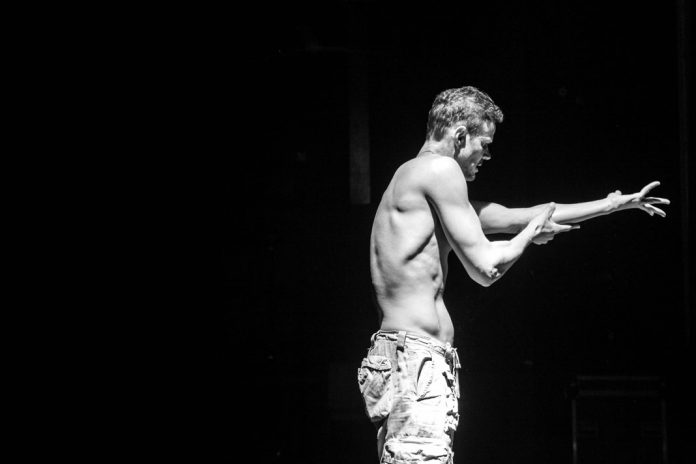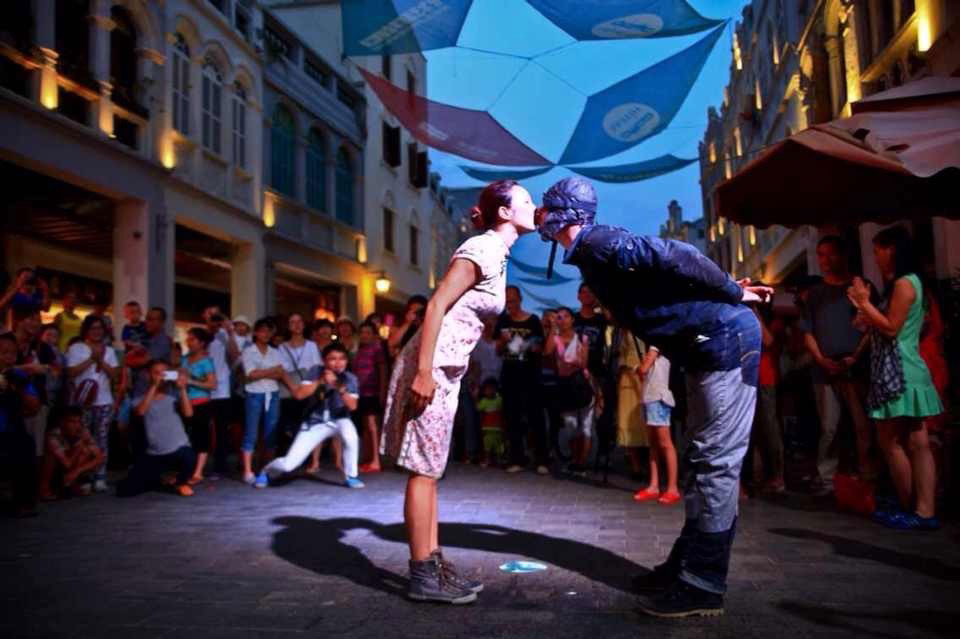
Kevin Polak – KheN工作室的编舞艺术家- Choreographer, KheN Studio, Guangzhou.
As one of the highlights for this year’s Holland Day in Guangzhou, eight internationally celebrated Dutch dancers gathered together to kick start the Sino-Dutch International Dance Festival 2015 (ID Festival 2015) in April in Guangzhou. Kevin Polak is the Artistic Director who helped to organise such an amazing event. Kevin also worked together with his partner Ning Xi to conduct several performances to audiences and students during the ID Festival.
 Best known as choreographer, Kevin and Ning’s works are often inspired and based on real daily life emotions. Dance with audiences, sometimes even interact with them, this special way of delivering stories and emotions has captured the heart of many. What’s more, with a background in Psychology, Kevin also applied his “art” into therapies. Delta Bridges invites Kevin Polak to share his story and ideas with us.
Best known as choreographer, Kevin and Ning’s works are often inspired and based on real daily life emotions. Dance with audiences, sometimes even interact with them, this special way of delivering stories and emotions has captured the heart of many. What’s more, with a background in Psychology, Kevin also applied his “art” into therapies. Delta Bridges invites Kevin Polak to share his story and ideas with us.
DB: How would you describe the characteristic of your dancing?
KEVIN POLAK: “Human”. For me, the focus is not so much on dancing techniques I have. My goal is to perform real life stories: such as two people fall in love, then have problems, have issues, but stand up for their love. Only with real life stories, my audiences can somehow relate to what we do. My dance is only a medium to tell the story.
DB: How do you create your works?
KP: We use Systemic Constellation as a base to create all our work. This will efflorescence the “Human Being” inside the performer and creates a sustainable group feeling that endures and strengthens. We experienced that the “field” in Systemic Constellation is the same as the “field” dancers create in the studio and on stage. It’s about being truly in the moment, also as creators, using the talents, personalities and life stories of the performers, to develop a strong individual selfartistic-awareness that is sustainable. Systemic Constellation is about belonging, about finding our place through acknowledgment and honoring who and what came before. Once the Constellation is established, an extraordinary phenomenon begins to emerge very quickly: each representative starts experiencing the feelings, thoughts, reactions and body sensations of the specific person they represent. This is a spontaneous process coming out of each representative’s soul and heart, defying all rules of logic and reasoning.
DB: What do you see as the trend of modern day dancing?
KP: I feel the audiences today are tired of the difficult modern dances that they don’t understand. That’s why modern dance in Holland is experiencing such difficulties to attract more audiences. Modern dance with a way of expressing emotions, it is truly hard to understand. Musical works better in this case because it has very clear music and lyrics to express mixed emotions. My opinion is Modern Dance should keep its artistic aspects – the very difficult aspect as it has its audiences, but to reach broad audiences, one has got to show “YOU” as a performer: to show who you are and tell a story that they can understand. I started this “Human Modern Dance” in Holland and recently introduced to China. It has gone well with huge audiences, later this type of modern dance becomes a signature.
DB: Together with KheN workshops, you also created Polak Therapy – a movement therapy to release personal, mental and emotional issue. What is Polak Therapy and how does it work?
KP: This therapy I developed is based on systematic consolation and dance. Firstly, we want to get to know the dancers we work with, to make them open and face their pain, traumas, to get all that out, then we start to work with them. There are 4 steps of consolation. The first step is to get them open: to walk around the studio and scan their body with their eyes still open– how my knees feel and etc; the second level is to feel their own body with their eyes closed; the third level is to imagine – such as to imagine the form of music is like a drop of rain; the fourth level is to reach out to someone with their eyes closed and imagine this person to be someone they miss very much. Through the above 4 steps to help dancers to open their hearts. Today, this therapy has helped many people overcome their life issues and is becoming more and more popular.






